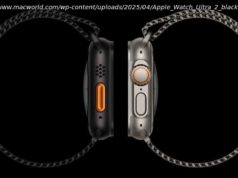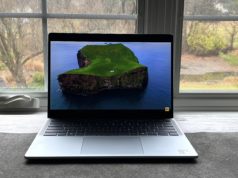The fourth feature update to Windows 10 is scheduled to arrive in October. It’s packed with a wide assortment of new and refined features, including some new security options designed to block zero-day exploits and ransomware.
Windows 10 after two years: Was the upgrade worth it?
After a little more than two years, Microsoft has finally settled into a rhythm with its new, fast-paced development cadence.
What Microsoft’s marketers are calling the Fall Creators Update (version 1709) is in the final stages of development now and is scheduled to arrive on desktop PCs starting October 17 .
This will be the fourth feature update to Windows 10 in a little over two years. And that pace will continue, with new feature updates (essentially full upgrades) due on a predictable twice-yearly cadence going forward.
As with previous feature updates, there will be no last-minute surprises in this update. It’s been developed in the open, with dozens of preview releases to members of the Windows Insider Program. For those who haven’t been paying close attention, though, this article should get you up to speed quickly.
When I looked through my notes from the past few months of testing Windows Insider builds, I was struck by how many changes have made their way into this update. And those changes encompass a wide array of user scenarios, including a healthy assortment aimed at IT pros and developers.
The logical place to start is, of course, the Start menu.
After a few gyrations in the first year, the basic design of the Windows 10 Start experience has remained consistent. This build is the first to incorporate elements of Microsoft’s new Fluent Design, which adds subtle performance and usability improvements, including easier resizing and smoother transitions.
Action Center, which hosts notifications on the right side of the screen, also gets Fluent Design features (most noticeable when you have transparency turned on) and is redesigned to make it easier to deal with notifications.
Cortana’s settings, which used to be available only from within the Cortana app, are now integrated into Settings. And in a cool design change, Cortana now displays answers in a flyout from the Start menu. That also includes results from web searches (powered by Bing only) , which means you don’t have to open a browser to do a search.
Windows Update has also evolved significantly in the two years since Windows 10’s initial release. When new updates are available, you’ll see an interactive toast notification that doesn’t interrupt whatever you’re doing now. In addition, the Windows Update display now offers detailed information about the status of individual updates, so you don’t have to wonder whether anything’s happening in the background.
One of my favorite classic Windows features, Volume Mixer, has finally been updated to include Universal Windows Platform (UWP) apps, including Microsoft Edge and Groove Music. This option, accessible by right-clicking the speaker icon in the taskbar, lets you set the volume of each app independently without affecting the overall system volume.
Another minor but welcome change is the addition of GPU performance information in Task Manager for systems with a discrete GPU.
The My People feature, which lets you pin icons for frequent correspondents to the taskbar, looks like a gimmick at first but in my experience has become incredibly useful. If you connect mail, calendar, and messaging accounts, it can show appointments, email messages, Skype conversations, and contact details in a scrolling window that’s available with a single click.
The migration of Windows knobs and levers from Control Panel to the modern Settings app continues with this update. Here are a few noteworthy changes:
Settings > System > About has been reorganized and streamlined. Previously, the information displayed here was in a single long, scrolling list. The new arrangement organizes the information into three blocks, covering system health, device information, and Windows details, as shown here.
Remote Desktop settings, which were scattered in several locations in earlier versions, now get a single home: Settings > System > Remote Desktop.
The incredibly useful Magnifier tool, which eases eyestrain by allowing you to zoom in on text and objects, also gets its own top-level category in Settings > Ease Of Use.
The long list of improvements to the security architecture of Windows 10 starts with a momentous change. The horribly insecure SMBv1 protocol is being removed from clean installs of Windows 10. (The SMBv1 components will continue to be included on upgrades where they are already installed.)
Home and Professional editions have the SMBv1 server component uninstalled but keep the client software; Enterprise and Education editions have all SMBv1 components uninstalled.
As a side effect of that change, the legacy Computer Browser service is also being removed.
The Windows Defender Security Center, which was introduced in an earlier feature update, has two major additions. The first is Exploit Protection, which offers many of the mitigations that were previously part of the separate Enhanced Mitigation Experience Toolkit (EMET) .
The Fall Creators Update also debuts an anti-ransomware feature called Controlled Folder Access, which is also available through the Windows Defender Security Center. When this feature is enabled, only approved apps can access Windows system files and data folders. (You can customize the list of data folders and whitelist specific apps.)
Finally, there’s Windows Defender Application Guard, a security feature that uses Hyper-V virtualization to create sandboxed browser sessions using Microsoft Edge. For now, at least, it’s available only in Windows 10 Enterprise edition.
One of the single most useful features in the Professional and Enterprise editions of Windows 10 is Hyper-V. This extremely robust virtualization platform gets more than its share of attention in this release.
A new Virtual Machine Gallery should make it easier for task-focused users to create useful virtual machines without having to wade through a long series of technical settings. After you create a virtual machine, you can export it more easily as well, by clicking the new Share button and compressing its pieces into a.vmcz file that can be imported on another Hyper-V capable PC.
In a change of default settings, checkpoints are now on, allowing you to roll back any VM even if you forgot to create a checkpoint manually.
A new advanced feature worth noting is the addition of virtual battery support in Hyper-V. When this feature is enabled on a VM running on a battery-powered device, you can see your physical machine’s battery state inside a VM.
It took much longer than it should have, but the OneDrive Files on Demand feature is now built into Windows. The settings take some getting used to (I’ll publish a tutorial later) but the results are worth it, with a much better way to work with large amounts of cloud storage on devices with minimal local storage.
Another unheralded feature in Windows 10 also gets some improvements in the Fall Creators Update.






